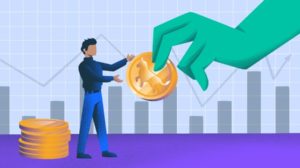When President Joe Biden unveiled his American Families Plan in the spring, many venture capitalists seemed to shrug.
Subscribe to the Crunchbase Daily
Sure, the capital gains tax was poised to go up—from 20 percent to up to 39.6 percent for high earners—but their favorite tax break as investors seemed almost certain to go untouched.
A lot can change in Washington, D.C., in five months.
Earlier this month, the House Ways and Means Committee approved a tax proposal that would cut in half the amount that investors who invest under the Qualified Small Business Stock (QSBS) tax provision can exclude.
While slicing into the QSBS is far from a sure thing, it does seem certain many venture capitalists will sit nervously as they look to see what Washington will do next.
“There’s still a lot more that needs to come out about this,” said William Yahara, tax director at EisnerAmper. “There is a lot of lobbying going on.”
What is QSBS?
While QSBS may be an obscure tax law to most, many in Silicon Valley know it well. Under Section 1202 of the IRS Code, early-stage investors who invest in QSBS—which includes tech startups as long as they’re C corporations—since 2010 have been permitted to exclude 100 percent of the capital gains made on those investments, if the stock is held for at least five years and is acquired at issue.
The exclusion—signed into law under the Clinton administration and expanded under the Obama White House—has a limit of $10 million or 10x the basis of the stock sold, whichever is greater.
Despite the Green Book released in May by the U.S. Department of the Treasury that stated exclusion under current law for capital gains on certain small business stock would also continue to apply, the House committee reversed course this month and proposed cutting into that tax break so only 50 percent of capital gains from such investments would be excluded from tax.
The change comes as the federal government looks for easy ways to increase revenue, especially as Democratic lawmakers try to pass a $3.5 trillion infrastructure package. According to the Joint Committee on Taxation, the 1202 tax change would bring in an additional $470 million next year, with that number rising to $710 million by 2029. While the tax increase is still not approved, it would affect any investment sold by investors after Sept. 13 of this year.
Investors watching
As investors watch and wait, some worry about the proposed tax change and its impact on jobs and innovation.
Brian Gaister, a co-founder and partner of Maryland-based SaaS Ventures, raised concerns about the effect the tax increase could have on small and medium-sized businesses looking to raise capital, as Section 1202 was put into place to incentivize investors to invest in small, but growing businesses.
“This is an incentive that compensates investors for taking early risk, which ultimately led to significant job creation in this country and most importantly leads to advances in both science and technology,” said Gaister, who also is co-founder and CEO of Maryland-based Pennington Partners & Co.
Minimizing the benefits around QSBS also disincentivizes investment in early tech companies and founders, Gaister contends.
It’s also important to remember the proposed changes to the QSBS benefit directly impacts those individual investors who often are the majority of early-stage investment capital—versus large institutional investors who traditionally invest in later stages and therefore do not receive the QSBS benefit.
“A meaningful amount of early-stage investment is coming from taxable (QSBS) investors,” Gaister said. He added this could affect what stage investors invest in since they are not being compensated as much for early risk, and that investors may just look to invest at a later stage, which would create a significant gap for early-stage companies that require capital investment.
Options remain
If the 1202 tax break is basically halved, investors would have options for other places to put their capital gains from previous deals that would lessen or defer the increased tax payments.
One option some investors may look into is Code Section 1045, which is essentially married to 1202, Yahara said. That provision allows investors to roll their capital gains from a QSBS investment into a new investment that also meets QSBS parameters without being taxed.
However, in order to take advantage of that, investors need to complete their new investment within 60 days and be able to substantiate that the original QSBS was held for greater than six months.
Another option investors would have to at least defer paying capital gains tax would be by investing in Opportunity Zones throughout the U.S.
Opportunity Zones are federally designated zones located in lower-income areas. The tax-advantaged program is designed to offer meaningful incentives to invest in real estate development or businesses that create new jobs to spur growth.
Gaister, who invests in Opportunity Zones, mentioned that the program allows for investors with capital gains to defer tax payments until 2026 and also receive a 10 percent discount—if invested this year, as the discount drops to 5 percent next year—with any earnings on the new investment in the Opportunity Zone being tax-free on capital gains.
However, Yahara stressed there is no one option for all investors.
“There is no one shoe fits all,” he said, adding it is important to also remember there are a lot of investors that invest in VC funds that are not affected by any change to QSBS rules—such as pensions.
Wait and see
Yahara also reiterated it is not entirely clear what the final outcome on the possible tax increase will be. He and others are still taking a wait-and-see approach to what Congress may do, he said.
While some important votes lie ahead at the end of this month, Gaister said he and his firm do not anticipate knowing the precise outcome of the proposed QSBS tax increase for another four to six weeks.
In the end, it is just another issue founders and investors must learn to deal with, he added.
“In business, entrepreneurs are used to dealing with challenges,” he said. “You can only control what you can control.”
Illustration: Dom Guzman

Stay up to date with recent funding rounds, acquisitions, and more with the Crunchbase Daily.






67.1K Followers